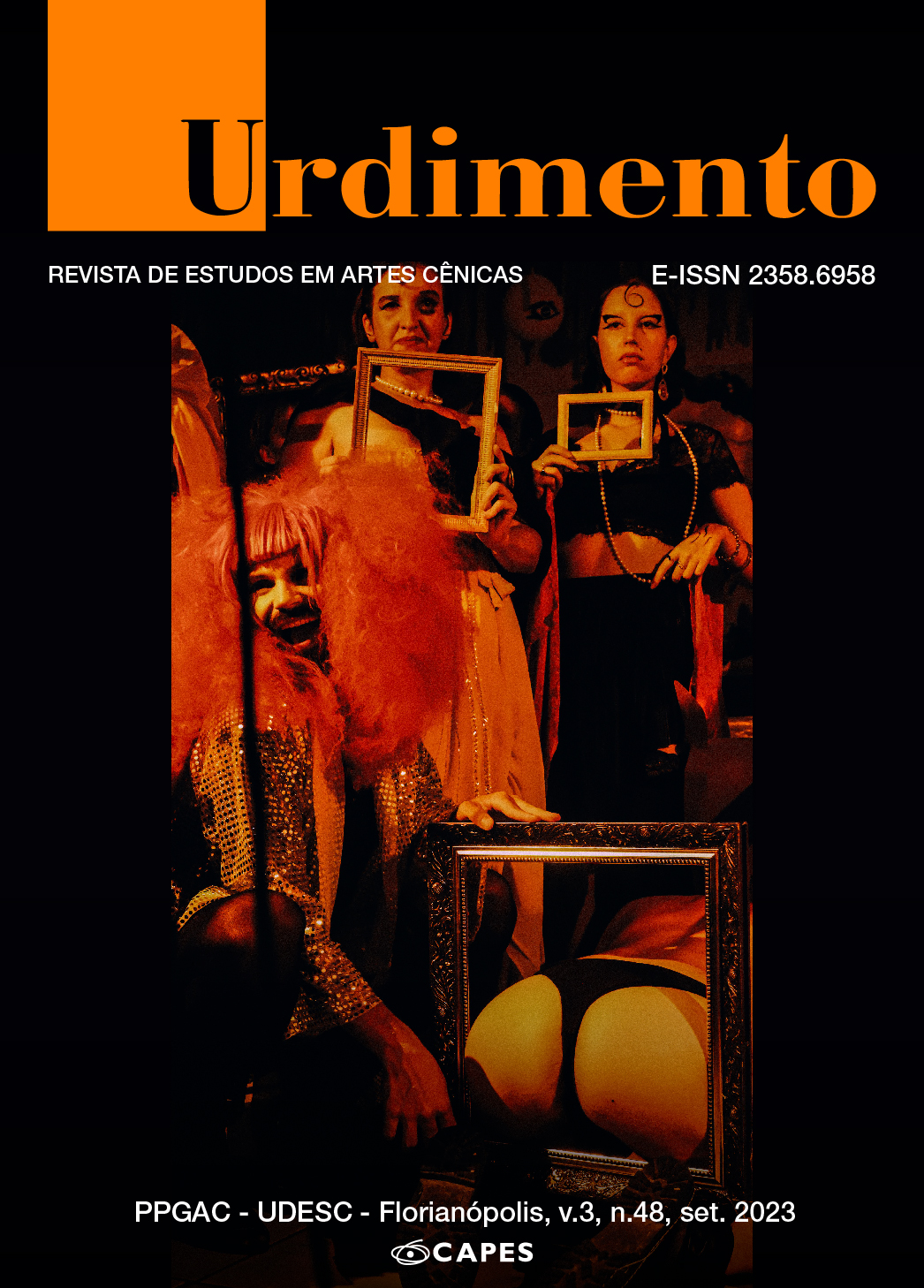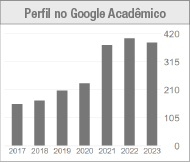Palavras praticadas, pés na lama: Hijikata Tatsumi e Jacques Lacan
DOI:
https://doi.org/10.5965/1414573103482023e0208Palavras-chave:
Hijikata Tatsumi, Jacques Lacan, escrita, gozo, corpoResumo
O presente artigo propõe uma analogia entre a dança, os gestos e a escrita de Hijikata Tatsumi – artista japonês, criador do butô entre os anos 1950 e 1980 – e a escrita tal como abordada pelo psicanalista francês Jacques Lacan, especialmente a partir de sua noção de gozo, atrelada a uma abordagem específica da noção de corpo. Para tal, debruçamo-nos sobretudo no modo como Hijikata criou o butô, bem como em seu sistema de notação, chamado buto-fu, aproximando-o da teoria psicanalítica, notadamente daquilo que Lacan abordou, com a caligrafia japonesa, como o que chamamos de escrita de gozo. Tratamos, neste artigo, dos conceitos envolvidos, lançando mão de metáforas e ilustrações lacanianas, como a do litoral, tomando Hijikata como guia e âncora prática para a teoria que se configurou como objeto da pesquisa.
Downloads
Referências
ANDRADE, Cleyton. Lacan chinês: Poesia, ideograma e caligrafia chinesa de uma psicanálise. Maceió: Edufal, 2015.
BAIOCCHI, Maura. Butoh: dança veredas d’alma. São Paulo: Palas Athena, 1995.
BASSOLS, Miquel. Lituratierra. Cuadernos del INES, Venezuela, n.9, Nueva Escuela Lacaniana, 2015.
DE FELICE SOUZA, Thereza. Gestos litorais: considerações sobre letra, Lacan e Pina Bausch. Dissertação (Mestrado) – Programa de Pós-graduação em Psicologia Clínica, Pontifícia Universidade Católica do Rio de Janeiro, Rio de Janeiro, 2018.
CARVALHO, Rodrigo Lyra. O sujeito suposto saber e a tirania da transparência. 2017. 180 fls. Tese (Doutorado) - Programa de Pós-graduação em Psicanálise, Universidade do Estado do Rio de Janeiro, Rio de Janeiro, 2017.
COHEN, Renato. Performance como linguagem. São Paulo: Editora Perspectiva, 2019.
FRANT, Adriana. Linhas de errância / traços de vida nos cadernos de Tatsumi Hijikata. In: XV Encontro ABRALIC, 2016. Anais eletrônicos do XV Encontro ABRALIC, Rio de Janeiro, 2016, p. 5467-5476.
LACAN, Jacques. (1957). A instância da letra no inconsciente ou a razão desde Freud. In: Escritos. Rio de Janeiro: Jorge Zahar Ed., 1998.
LACAN, Jacques. (1958). A significação do falo. In: Escritos. Rio de Janeiro: Jorge Zahar Ed., 1998.
LACAN, Jacques. (1959-60). O Seminário, Livro 7: a ética da psicanálise. Rio de janeiro, Jorge Zahar Ed., 2008.
LACAN, Jacques. (1960). Subversão do sujeito e dialética do desejo no inconsciente freudiano. In: Escritos. Rio de Janeiro: Jorge Zahar Ed., 1998.
LACAN, Jacques. (1964). O Seminário, Livro 11: os quatro conceitos fundamentais da psicanálise. Rio de Janeiro: Jorge Zahar Ed., 2008.
LACAN, Jacques. (1971). Lituraterra. In: Outros Escritos. Rio de Janeiro: Jorge Zahar Ed., 2003.
LACAN, Jacques. (1972-73). O Seminário, Livro 20: mais, ainda. Rio de Janeiro: Jorge Zahar Ed., 2008.
LACAN, Jacques. (1975-76). O Seminário, Livro 23: o sinthoma. Rio de Janeiro: Jorge Zahar Ed., 2007.
LAURENT, Éric. A Carta Roubada e o voo sobre a letra. Correio, São Paulo, n. 65: EBP, 2010.
MILLER, Jacques-Alain. Os seis paradigmas do gozo. Opção Lacaniana Online, São Paulo, n.7, EBP, 2012. Disponível em: http://opcaolacaniana.com.br/pdf/numero_7/Os_seis_paradigmas_do_gozo.pdf. Acesso em: 13 dez. 2022.
MORISHITA, Takashi. Hijikata Tatsumi’s notational butoh: an innovational method for butoh creation. Tóquio: Keio University Art Center, 2015.
REGNAULT, François. Em torno do vazio: a arte à luz da psicanálise. Rio de Janeiro: Contra Capa, 2001.
UNO, Kuniichi. Hijikata Tatsumi: pensar um corpo esgotado. São Paulo: N-1 edições, 2018.
VIEIRA, Marcus André. A escrita do silêncio (voz e letra em uma análise). Rio de Janeiro: Subversos, 2018a.
VIEIRA, Marcus André. Do objeto à letra. In: VIEIRA, Marcus André; DE FELICE, Thereza. (Org.) A arte da escrita cega: Jacques Lacan e a letra. Rio de Janeiro: Subversos, 2018b.
VIEIRA, Marcus André; DE FELICE, Thereza. (Org.) A arte da escrita cega: Jacques Lacan e a letra. Rio de Janeiro: Subversos, 2018.
Publicado
Como Citar
Edição
Seção
Licença
Copyright (c) 2023 Urdimento: Revista de Estudos em Artes Cênicas

Este trabalho está licenciado sob uma licença Creative Commons Attribution 4.0 International License.
Declaração de Direito Autoral
Os leitores são livres para transferir, imprimir e utilizar os artigos publicados na Revista, desde que haja sempre menção explícita ao(s) autor (es) e à Urdimentoe que não haja qualquer alteração no trabalho original. Qualquer outro uso dos textos precisa ser aprovado pelo(s) autor (es) e pela Revista. Ao submeter um artigo à Urdimento e tê-lo aprovado os autores concordam em ceder, sem remuneração, os seguintes direitos à Revista: os direitos de primeira publicação e a permissão para que a Revista redistribua esse artigo e seus meta dados aos serviços de indexação e referência que seus editores julguem apropriados.
Este periódico utiliza uma Licença de Atribuição Creative Commons– (CC BY 4.0)




